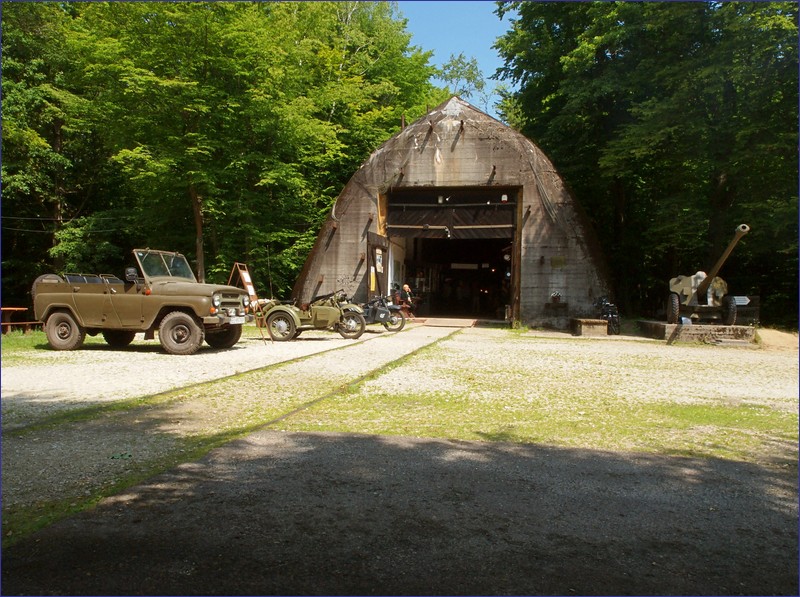Lodz is and important railway junction and a major city in central Poland, known for its unique industrial heritage, creative atmosphere, and dynamic transformation in recent decades. Nowadays an industrial history mixed with modern cultural and architectural revitalization – many industrial plants were converted into shopping malls and cultural institutions. Many manors and villas once belonging to manufacture owners were transformed into museums. The city’s centerpiece is Piotrkowska Street, one of the longest commercial streets in Europe, lined with historic tenement houses, restaurants, cafes, and vibrant street art.
Lodz has a very good railway connection with Warsaw and Krakow but nearby towns and cities have had an industrial character and mostly are neglected and unattractive to tourists. There are some places, where you find interesting monuments and museums.
In this article, I’ve included the most important ones that can be reached by regional trains within two hours, counting from the first to the last station within the borders of Lodz and the destination.
Direction Warsaw
The Lodz – Warsaw route is the most important one for travelers planning a day trip by train from Lodz. Along the way, you’ll find architectural gems of railway stations and interesting, though still relatively little-known, places worth visiting.
Rogów (optional) – a modest station, well known to railway enthusiasts for the Rogów Narrow-Gauge Railway and the exhibition of narrow-gauge and standard-gauge rolling stock at the nearby freight station. During the spring-to-autumn season, narrow-gauge trains operate on weekends, transporting tourists on the short Rogów–Jeżów route (7 km), where bonfire sausage roasts are organized. In the future, the line might be renovated to restore service to Rawa Mazowiecka and further to Biała Rawska (currently, the Jeżów–Rawa Mazowiecka section is impassable).
Skierniewice (optional) – a town associated with the Festival of Flowers, Fruits, and Vegetables. It has also a beautiful railway station. The main drawback is that the most interesting sites are spread out, requiring quite a bit of walking. The Skierniewice train station is undoubtedly one of the most beautiful in Europe. On platform 1, there’s a statue of Wokulski, and the interior is also impressive. Worth seeing is the palace-park complex with the Primates’ Park. The palace belongs to the Warsaw University of Life Sciences and is open to the public only on select days, usually once a month. The well-kept park is open daily. The town square is rather plain and paved over, but plans are underway to restore greenery to the main plaza. You can end your visit at the Museum of Skierniewice History, a small but worthwhile institution that opened in 2018. While walking through the town, you’ll also encounter religious landmarks, historic villas, and other eye-catching buildings mixed in with communist-era blocks of varying shapes and purposes.
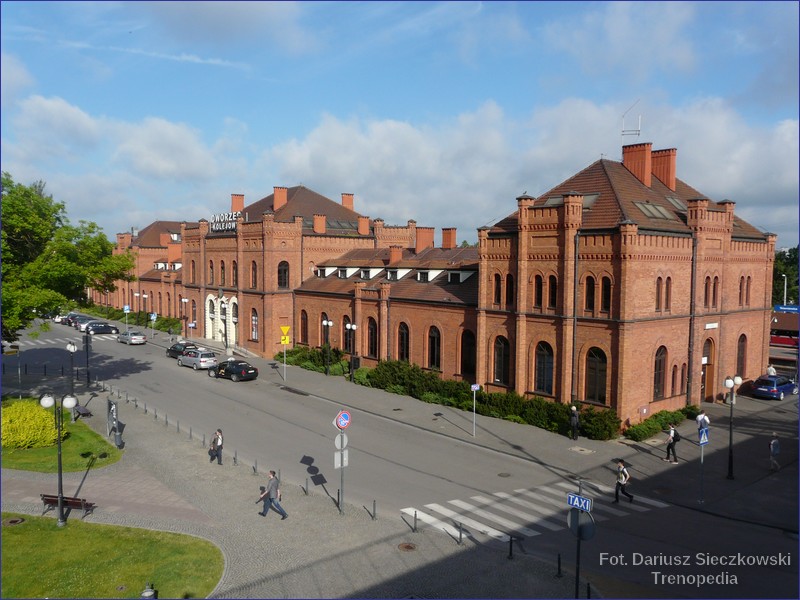
Żyrardów – a former industrial town with a well-preserved 19th-century factory settlement and revitalized post-industrial buildings, factory owners’ villas, and workers’ housing. The heart of the city is John Paul II Square, dominated by the Neo-Gothic Church of Our Lady of Consolation (1900–1903), whose towers rise above the city. From the beautiful historic railway station, it’s a 10–15 minute walk to the city center, where most attractions are located. In Żyrardów, be sure to visit two museums: the Museum of Western Mazovia, located in the Dittrich Villa (the former residence of a Jewish factory owner), and the Linen Industry Museum, dedicated to linen production and featuring working weaving machines. Some parts of the town still need revitalization, and a strong sense of insecurity has been reported in certain areas.
Warsaw – visiting the capital requires at least a weekend, ideally several days. A one-day trip focuses on the area within a few kilometers of Warsaw Central Station, which offers no shortage of attractions. Walking from the station toward Śródmieście (city center), you’ll pass the Palace of Culture and Science, which includes a viewing terrace, the Museum of Evolution, and the Museum of Technology—just exploring these can take a few hours. Continue your walk through Nowy Świat and Krakowskie Przedmieście, passing landmarks like the Presidential Palace, University of Warsaw, the Visitationist Church, and St. Anne’s Church. Alternatively, head through Piłsudski Square. Either way, you’ll reach Castle Square, where you can admire the reconstructed Old Town, Royal Castle, and National Stadium from the viewing terrace. A walk through the Old Town takes about an hour. Be sure to also explore New Town and Lubelska Street.
The rest of your Warsaw visit is up to you – Łazienki Park, Praga district, or any of the many museums. For a one-day trip, it’s unlikely you’ll have time to reach Wilanów (though a 24-hour public transport ticket is recommended regardless). If I were to suggest museums specifically for a one-day visit, these would be top priority:
NBP Money Centre – an excellent museum focused on financial education and the history of money, with a large collection of coins and banknotes.
Stacja Muzeum – a must-see for railway enthusiasts; the largest railway museum in Poland, located at Warszawa Główna station, with an extensive outdoor collection of rolling stock.
Museum of Warsaw – dedicated to the city’s history, showcasing achievements and creativity of Warsaw residents in connected Old Town tenement houses.
Copernicus Science Centre – ideal for families with children. Although similar centers exist elsewhere in Poland, Warsaw’s version is unmatched.
There are also many museums dedicated to history of Poland.
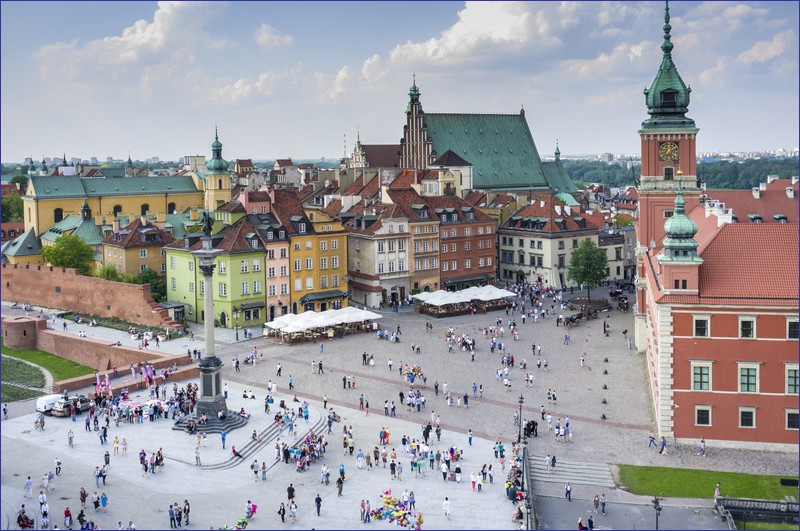
Direction Łęczyca
Only for ambitious tourists who like visit places off the beaten path. Zgierz is considered as ugliest city in the Poland but I don’t agree with this. There are neglected ruins of abandoned industrial plants but generally the town is in my opinion interesting.
Zgierz (optional) – a neglected but very interesting town for ambitious tourists. The renovated railway station is a 10–15-minute walk from the town’s main attraction – the Cultural Park of the City of Weavers, featuring the charming Rembowskiego Street. The most beautiful wooden building on that street houses the Museum of the Cultural Park Site, with permanent exhibitions showcasing traditional cloth-making techniques. Just about 150 meters away, on a neighboring street, you’ll find the Museum of the City of Zgierz, where you can learn about the town’s history. Among religious landmarks, the most notable is the Church of Saint Catherine of Alexandria, Martyr, located on John Paul II Square. Throughout downtown Zgierz, you’ll encounter wooden buildings reminiscent of those found in the Baltic states, as well as abandoned industrial facilities. Outside the center, you can visit the private Museum of Historic Vehicles, which boasts a large collection of classic cars.
Łęczyca (optional) – one of the prettiest small towns in Poland. Trains stop at renovated manor-style station, similar to those in Ozorków, Gostynin, and Sierpc. On the way to the town center, you’ll pass a former narrow-gauge railway track and the ruined station building of the Krośniewice Narrow-Gauge Railway, long out of use. Be sure to visit the market square with its town hall and the castle, which houses a museum. The castle tower is open to visitors. The most interesting attractions lie 2.5 kilometers from the center, near the original medieval location of Łęczyca. In the village of Tum, you’ll find a monumental Romanesque archcathedral, and just a few dozen meters further, in the village of Kwiatkówek, you can visit a small open-air museum, along with a gradually reconstructed Slavic fortified settlement, which takes shape more and more each year.
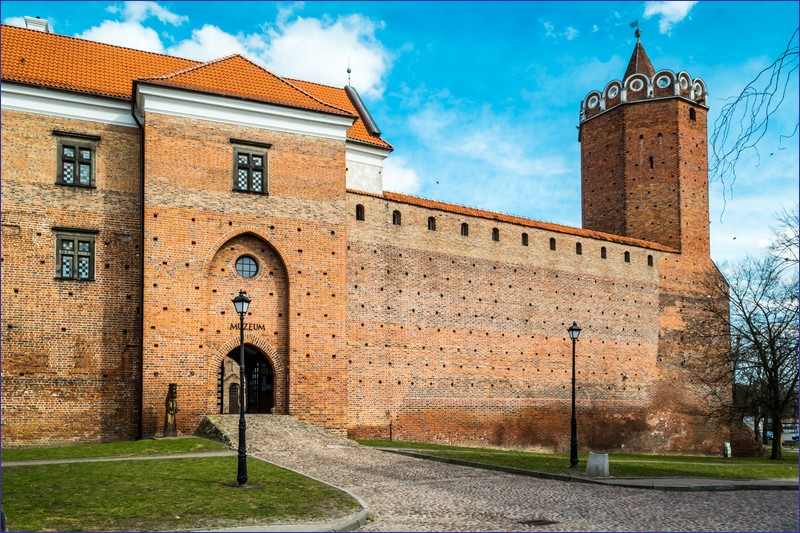
Day trips from Lodz by train – direction Czestochowa
The cities listed below are not particularly attractive or beautiful for foreign tourists, but they can be considered as options for a one-day train trip from Łódź.
Piotrków Trybunalski (optional) – a medium-sized town. The historic railway station is located near a restored water tower, which can be visited only on specific dates during guided tours organized by the local Tourist Information Center. On the way to the Old Town, you’ll pass a small Orthodox church and a beautiful District Court building. The Old Town consists of a nicely revitalized section and a neglected quarter that gives off a 1970s atmosphere. According to tourist reviews, that part of town can feel unsafe at times. After passing through it, you’ll reach the Royal Castle, which houses a museum with exhibits of furniture, bladed and firearms, archaeological finds, and items related to local history. The town also has many religious monuments. Beer lovers should check out a well-stocked craft beer store in the center selling local brews. However, ticket prices for the small brewing museum attached to the store are relatively high. Some well-known Polish films and TV series were shot in Piotrków Trybunalski. Some visitors find the city charming, while others consider it lifeless and boring. In any case, it’s worth spending a few hours here.
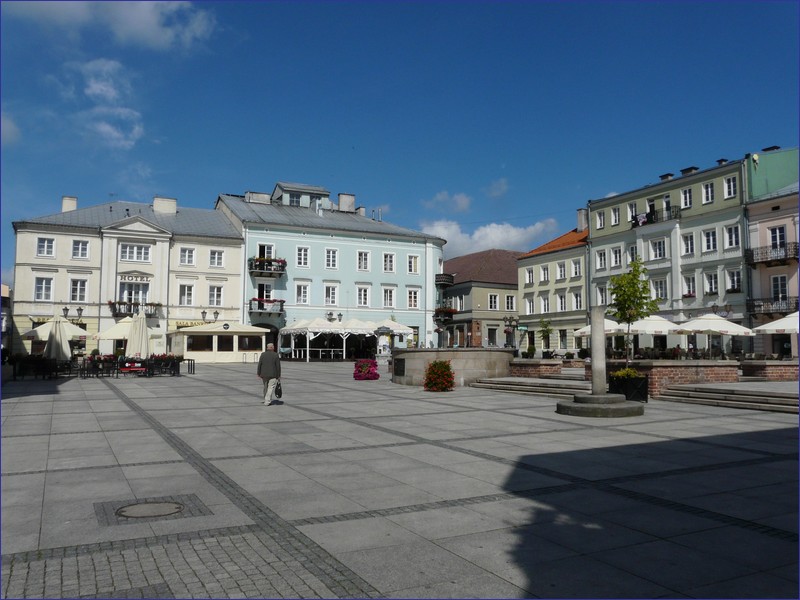
Częstochowa (optional) – a must-visit for every Catholic. The city’s most famous site is Jasna Góra, which can be reached on foot in about 20–25 minutes from the main railway station. Besides Jasna Góra, in the city center area you can visit the Iron Ore Mining Museum, the City Museum in the town hall (and possibly its branches), and the Match Production Museum. Near Częstochowa Raków station, you can tour the Lusatian Culture Archaeological Reserve, and at the renovated Częstochowa Stradom station, there’s a small Railway History Museum. Overall, the city left a negative impression on me, but it remains one of those places every Pole should visit.
Direction Łowicz
When planning train trips from Łódź, it’s worth visiting Łowicz. The route goes through Zgierz and Głowno—it’s fast and pleasant, although frequent line closures can be a problem. There are also interesting places to see near Łowicz.
Łowicz – a small, pleasant town, perfect for a day trip or as a base for exploring the area. It takes just five minutes to walk from the train station to the town center, passing a beautiful Polish Post Office building along the way. The town has two squares (one of which is triangular), several notable religious landmarks (the most famous being the Cathedral Basilica of the Assumption of the Blessed Virgin Mary and St. Nicholas), and it’s worth stopping by the Museum in Łowicz. In the past, the town was known for its delicious kebabs—though it’s unclear what the current offerings are like.
In nearby Maurzyce, the Łowicz Village Open-Air Museum (Skansen Wsi Łowickiej) is worth visiting. However, it’s unclear how to get there using public transportation from Łowicz. The closest train stop is Niedźwiadka Łowicka.
Sochaczew isn’t particularly notable for its architecture, but it’s definitely worth a visit to see the Narrow-Gauge Railway Museum, which houses one of the largest collections of narrow-gauge rolling stock in Europe. This branch of Warsaw’s Stacja Muzeum also operates heritage trains along the narrow-gauge line during the summer season. While in town, you can also visit the Museum of the Sochaczew Region and the Battlefield of the Bzura River.
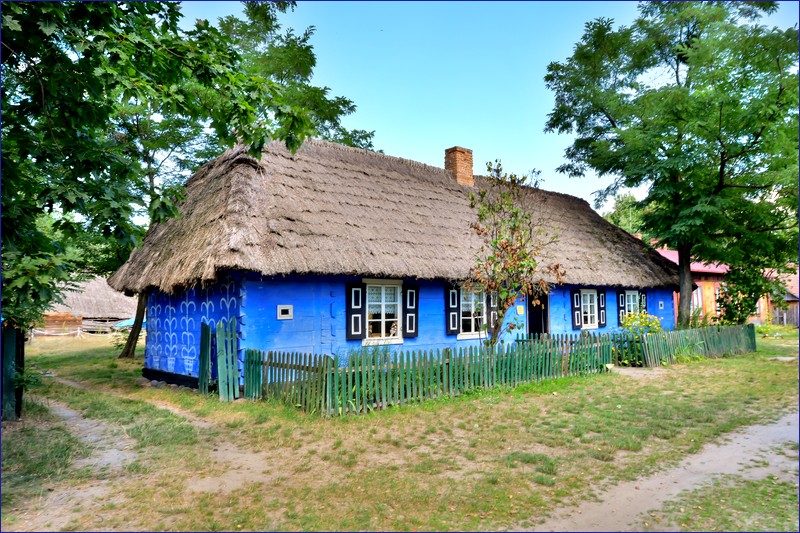
Direction Tomaszow Mazowiecki
An interesting destination for a train trip from Łódź is Tomaszów Mazowiecki. While the town itself is rather unremarkable, there are several very interesting attractions in and around the center.
Tomaszów Mazowiecki – not a well-known tourist spot, but worth visiting thanks to the highly-rated Museum in Tomaszów Mazowiecki, located in the former summer Ostrowski Palace. The museum’s highlight is an original German Sdkfz 251 armored personnel carrier. Even more interesting is the Pilica River Open-Air Museum (Skansen Rzeki Pilicy), situated on the outskirts of the town. Railway enthusiasts will appreciate the building of the old Wolbórka railway station, which is part of the exhibition. Though the open-air museum is relatively small, it makes up for it with a diverse range of exhibits.
Right next to it is the Niebieskie Źródła Nature Reserve, an excellent spot for walks and enjoying nature.
A few kilometers further lies a railway bunker in Jeleń. 11 kilometers from Tomaszow Mazowiecki lies another railway bunker in Konewka. There is a cycle path between Tomaszow Mazowiecki and Konewka.
Related articles:
Train travel in Poland – a comprehensive guide
Scenic railways in Poland
Narrow-gauge railways in Poland
